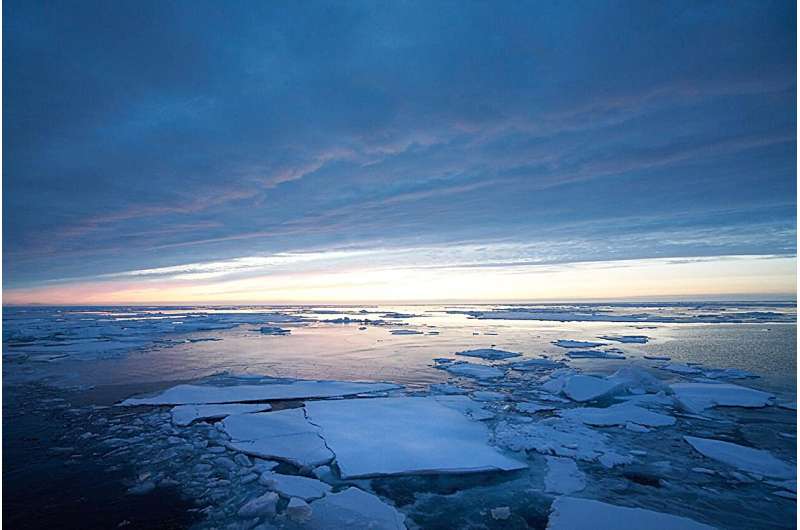This article has been reviewed according to Science X's editorial process and policies. Editors have highlighted the following attributes while ensuring the content's credibility:
fact-checked
peer-reviewed publication
trusted source
proofread
Atmospheric rivers shape long-term changes in Arctic moisture variability

Recent decades have seen rapid warming in the Arctic, known as Arctic amplification, which has impacted the Arctic's cryosphere and ecosystems and influenced global weather and climate through changes in atmospheric circulation.
According to the Clausius-Clapeyron relationship, higher temperatures lead to increased water vapor in the atmosphere. This additional moisture, besides being a greenhouse gas, contributes to further Arctic warming through related feedback mechanisms.
Atmospheric rivers (ARs) are narrow, transient corridors of intense water vapor transport, responsible for about 90% of poleward moisture movement despite only making up about 10% of atmospheric activity.
Predominantly occurring in mid-latitudes, ARs transport warm, moist air toward polar regions. However, during summer, when Arctic moistening is most significant, the drivers behind changes in ARs and their contributions to long-term water vapor variability are not well understood.
A study published in Nature Communications by an international team of scientists from China, the U.S., Chile, and Belgium has shed light on this issue.
The study discovered a strong spatiotemporal connection between ARs and variables such as specific humidity, circulation, and temperature across different time scales, suggesting that similar physical mechanisms regulate them. Notably, long-term changes in Arctic summer moisture due to ARs cannot be entirely attributed to human-induced climate change, according to model responses.
The study found that low-frequency large-scale atmospheric circulation in the Arctic significantly influences AR activity.
"In recent decades, ARs have been transporting more water vapor to the Arctic, a phenomenon previously linked to global warming and Arctic amplification. However, this study found that internal variability, rather than anthropogenic forcing, is the primary driver of this change," said Prof. Qinghua Ding from University of California, Santa Barbara, the study's corresponding author.
After isolating the moisture changes attributed to ARs, the study revealed that since 1979, ARs have contributed to over 36% of the increase in Arctic summer water vapor trends. This contribution is particularly significant in areas where AR activity has markedly increased, such as western Greenland, northern Europe, and eastern Siberia, where it exceeds 50%.
"While ARs are generally seen as stochastic extreme atmospheric phenomena driven by synoptic scale systems, they play a crucial role in modulating Arctic water vapor variability and shaping long-term changes in Arctic summer moisture," said Dr. Wang Zhibiao from the Institute of Atmospheric Physics at the Chinese Academy of Sciences, the study's lead author.
More information: Zhibiao Wang et al, Role of atmospheric rivers in shaping long term Arctic moisture variability, Nature Communications (2024). DOI: 10.1038/s41467-024-49857-y
Journal information: Nature Communications
Provided by Chinese Academy of Sciences





















